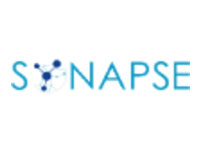
User-Centred Design: The Key to Effective Public Sector AI
As public sector organisations increasingly explore artificial intelligence (AI) to improve service delivery, one persistent challenge stands out: making AI systems intelligible, usable, and truly helpful for end-users. Whether it’s a clinician needing to understand a diagnosis recommendation or a caseworker interpreting risk assessments, AI explainability matters. At Certes IT Service Solutions, we believe User-Centred Design (UCD) is key to bridging this gap, helping CIOs and IT Directors implement AI systems that are not just powerful, but purposeful and ethical.
Understanding the Challenge: Why AI Needs to Be Explainable
AI, particularly learning-based systems, can be complex and opaque. In environments like healthcare, social services, or local government, the inability to explain an AI decision can erode trust, hinder adoption, and even cause harm.
Take the example of a doctor using an AI tool to suggest treatments. If the doctor doesn’t understand the reasoning behind the recommendation, they may ignore it—or worse, rely on it blindly without validation. Public sector professionals need clear, actionable explanations tailored to their context, not just technical descriptions. This is where UCD provides a framework to design explanations that are meaningful and aligned with user goals.
The Four Stages of User-Centred Design for AI
User-Centred Design puts the needs, tasks, and environments of real users at the heart of system development. When applied to AI implementation in the public sector, UCD ensures that tools are not just usable, but genuinely useful.
1. Understanding the Context of Use
This stage involves deep engagement with the people who will interact with the AI system. What are their roles? What decisions do they need to make? When do they need explanations, and in what format? For example, a benefits officer may require real-time, on-screen prompts, while a policy maker might prefer post-analysis reports.
By thoroughly mapping these use cases, IT leaders can ensure that AI systems are developed with clear user contexts in mind, reducing misuse and increasing confidence in the system.
2. Specifying User Needs
Once the context is understood, the next step is defining what users need from AI explanations. This includes both functional requirements (e.g., the system must explain why a housing application is flagged for review) and non-functional ones (e.g., clarity, timeliness, accessibility).
Creating usage scenarios here can be powerful, illustrating real-world interactions and enabling designers and developers to prioritise features that matter most.
3. Designing Solutions
At this point, the system’s explanatory interface is created. This includes how explanations are presented, via dashboards, alerts, visualisations, or even natural language summaries. Interactive prototypes and mock-ups should be tested with real users to refine how information is delivered.
This design process is not just about aesthetics; it’s about aligning with cognitive workflows so that users can easily absorb and act on AI outputs.
4. Evaluating Against Requirements
Finally, UCD demands that all designs be tested with users against predefined criteria like usability, usefulness, and trust. For AI, this might involve scenario-based testing, where users interact with the system in simulated environments to see if it genuinely supports their decision-making processes.
This iterative testing phase is crucial, helping to uncover gaps in understanding, improve confidence in AI, and identify unintended consequences early.
The Strategic Value of User-Centred Design for Public Sector CIOs
By embedding UCD into AI implementation, public sector CIOs and IT directors gain several strategic advantages:
-
Improved Adoption: Systems designed with users in mind are more likely to be accepted and integrated into daily workflows.
-
Reduced Risk: Clearer AI explanations reduce the chances of misuse or harmful decisions.
-
Increased Trust: Transparent and intelligible systems build trust among both staff and the public.
-
Better Outcomes: When professionals understand and trust AI, it enhances, not replaces, their expertise, leading to better decisions and services.
Final Thoughts: AI With People in Mind
As public sector organisations accelerate their AI journeys, it’s critical not to lose sight of the human element. User-Centred Design offers a practical, ethical, and effective methodology to ensure AI serves real needs, in real contexts, for real people.
At Certes IT Service Solutions, we help public sector organisations implement AI responsibly—ensuring that the systems you deploy are not just advanced, but aligned with your mission to serve the public effectively and equitably.
Get in touch with Certes today to explore how User-Centred Design can transform your AI projects—from concept to compliance to confidence.


















